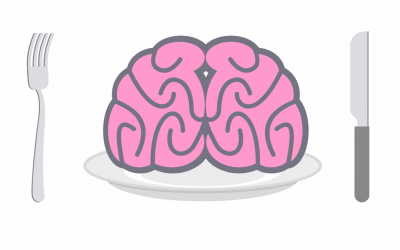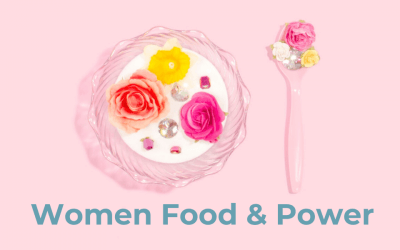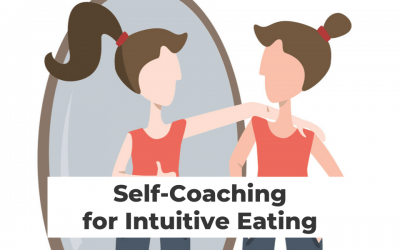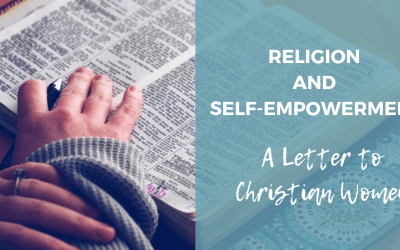Mindset Blogs
Diet Mindset: How to unlearn diet culture thoughts
Diet mindset professional support to unlearn the diet culture thoughts training was not available when I started my transition to a non-diet approach to nutrition and health as a clinical nutritionist; had to figure it out on my own. Piece it all together…
In this podcast episode First Do No Harm: The Intuitive Eating Mentorship Journey I argued that the current model of practice for a nutrition professional top-down approach is causing more harm to a particular segment of our clients: women on the diet roller coster.
The solution: The bottom-up approach. Start first with addressing the diet mindset so we can move to coach nutrition and health later in the journey. Enter diet mindset professional training!
In this article, we will cover:
Diet Mindset Professional Training
Self-Coaching for Intuitive eating
If you would like to listen to the article in audio format the Going Beyond The Food Show – Pro Series Season 1 Episode 3
Links mentioned in the episode…
Non-Diet Coaching Certification
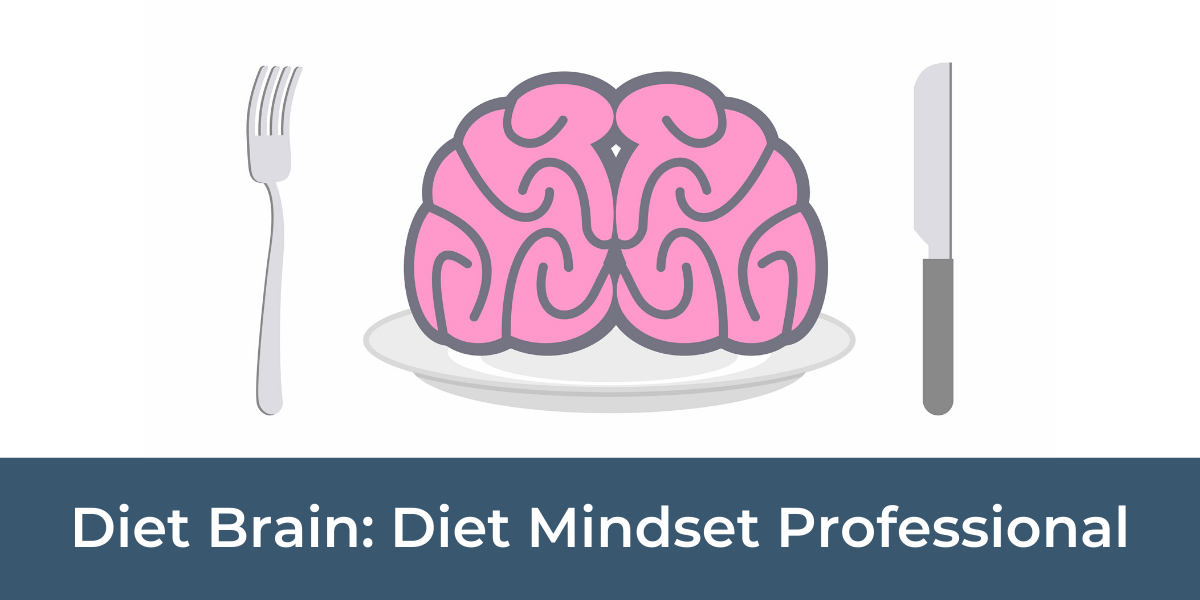

Diet Mindset Professional Training
In my professional studies as a clinical nutritionist, we barely touched upon the psychology of eating or diet mindset professional training. We jumped right into the WHAT to eat emphasizing greatly why it was so important to our health with a lot of facts and data.
So, I went into private practice and model what I had learned. Spending hours creating a complex protocol. Very quickly, I realized that wasn’t going to work… clients were overwhelmed and scared of the complexity of what they would have to do. I went to what I was taught: trying to convince them with studies, facts, and data as to why restricting this and that food was essential to their health. That didn’t work either.
Why wasn’t it working? Back then, I had no answer but today after years of independent studies I can tell you why: intellectual knowledge is not what motivates humans to change or make different choices. Especially not with food. The answer diet mindset professional training.
How human make food choices
So, if data points and fear-mongering isn’t an effective tool to help people change their eating habits, what is?
Of course, the primary driver to food choices is hunger however, what we choose to eat is not only our physiological and nutritional needs. Many other factors influence our food choice according to research:
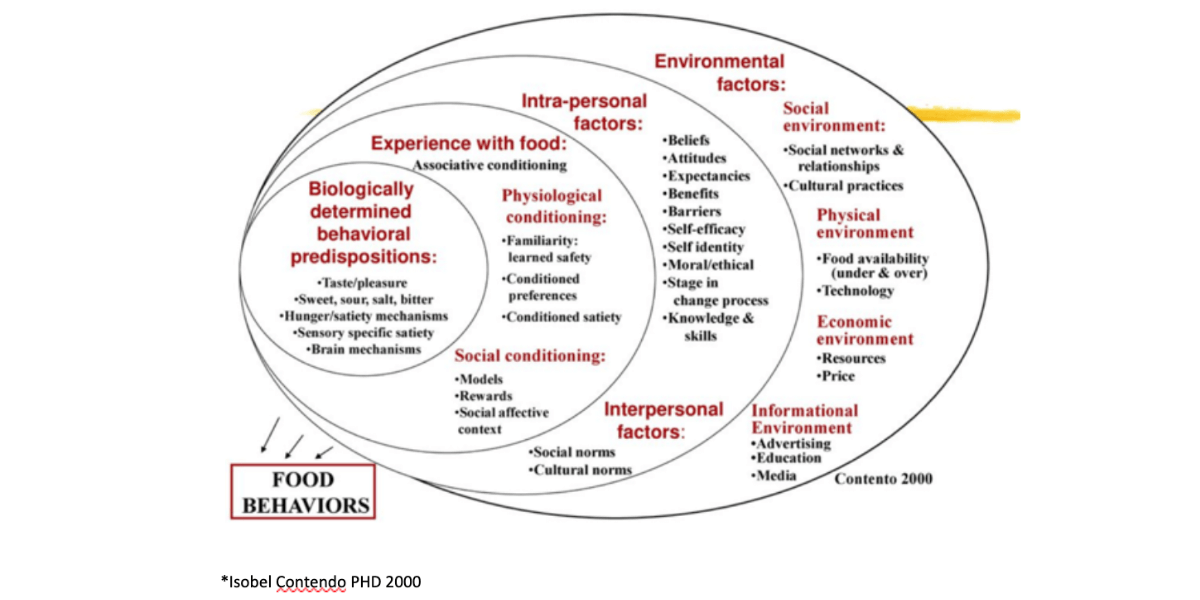

Biological Determinants
For example, our innate eating cues hunger, fullness, and satisfaction which is what is recognized as eating cues in the world of intuitive eating coaching. You can also include here Set Point theory which I discussed in depth with Chris Sandle on our Going Beyond The Food Show podcast series about weight loss.
Economic Determinants
In sum, here we can think of cost, income, availability of food which is truly out of our control as health practitioners. These are major issues with the newest version of diet culture: the Wellness Diet.
Physical Determinants
For example, access, education, skills (e.g. cooking skills), and time availability which are mostly out of our control as health practitioners.
Social Determinants
This aspect of our food choices such as culture, family, peers, and meal patterns are mostly out of reach for us as health practitioners except one that is particularly relevant to our segment of women who have been chronic dieters: weight discrimination.
There is emerging evidence that experiences with weight stigma may lead to different eating behavior. For example, individuals ate more food after exposure to a weight stigmatizing condition. Additionally, in a study, 79 percent of women reported coping with weight stigma on multiple occasions by eating more food.
A properly structured non-diet approach to health engages clients and patients in learning coping skills to help reduce the impact of weight stigma.
Psychological Determinants
This is the world of mind and emotions. Elements such as mood, stress, and guilt are one area that as non-diet health professionals should be included in our approach.
Today, it is widely recognized that food influences our mood, and that mood has a strong influence on our choice of food. For this reason, these determinants are the first 3 pillars of the Going Beyond The Food Method™️ .
Attitudes, beliefs, and knowledge about food
This is where we include intellectual knowledge about food but also include all the constructed food beliefs pass down to us from the weight loss & wellness industries in order to sell their products.
How the diet mindset develops
What’s unique about our eating behaviors, unlike many other biological functions, is too often subject to sophisticated cognitive control.
We consciously manipulate our food choices beyond the need of our bodies to achieve other external gains/ goals in our life. One of the most widely practiced forms of cognitive control over food intake is dieting (cognitive dietary restraint).
In most studies on the topic of food choices, it’s most often observed that women and men behave differently with food. In this study, women reported significantly higher restraint, more guilt after eating in various types of social situations, and more overeating in reaction to unpleasant emotional state mood.
Women’s bodies are imposed on different beauty standards than men’s bodies. Diet Culture reinforces the thin ideals to women leading 91% of women in western societies to dislike their bodies and using dieting (cognitive food restraint) to meet diet culture expectations of their body size and beauty.
With repeated failed attempts at dieting, dieting has a 91%-95% failure rate over 5 years period, women’s brain & body develops coping mechanism as a mean of surviving diet failure and weight stigma. This is why we need diet mindset professional training!
Common thought errors or cognitive distortion
When it comes to how we think, the dieter’s brain adapts using what we know as cognitive distortion or thought errors.
Let’s take a step back first to make sure we all understand how the human brain functions.
When faced with an event or a trigger, labelled in the model below as circumstances then given an interpretation. This interpretation is based on our long-held beliefs, past experiences, values system including diet culture. We then form an opinion, a thought which then ignites an emotion. The emotions we feel then creates the actions or behaviours we take. The collective action we take then creates our result.
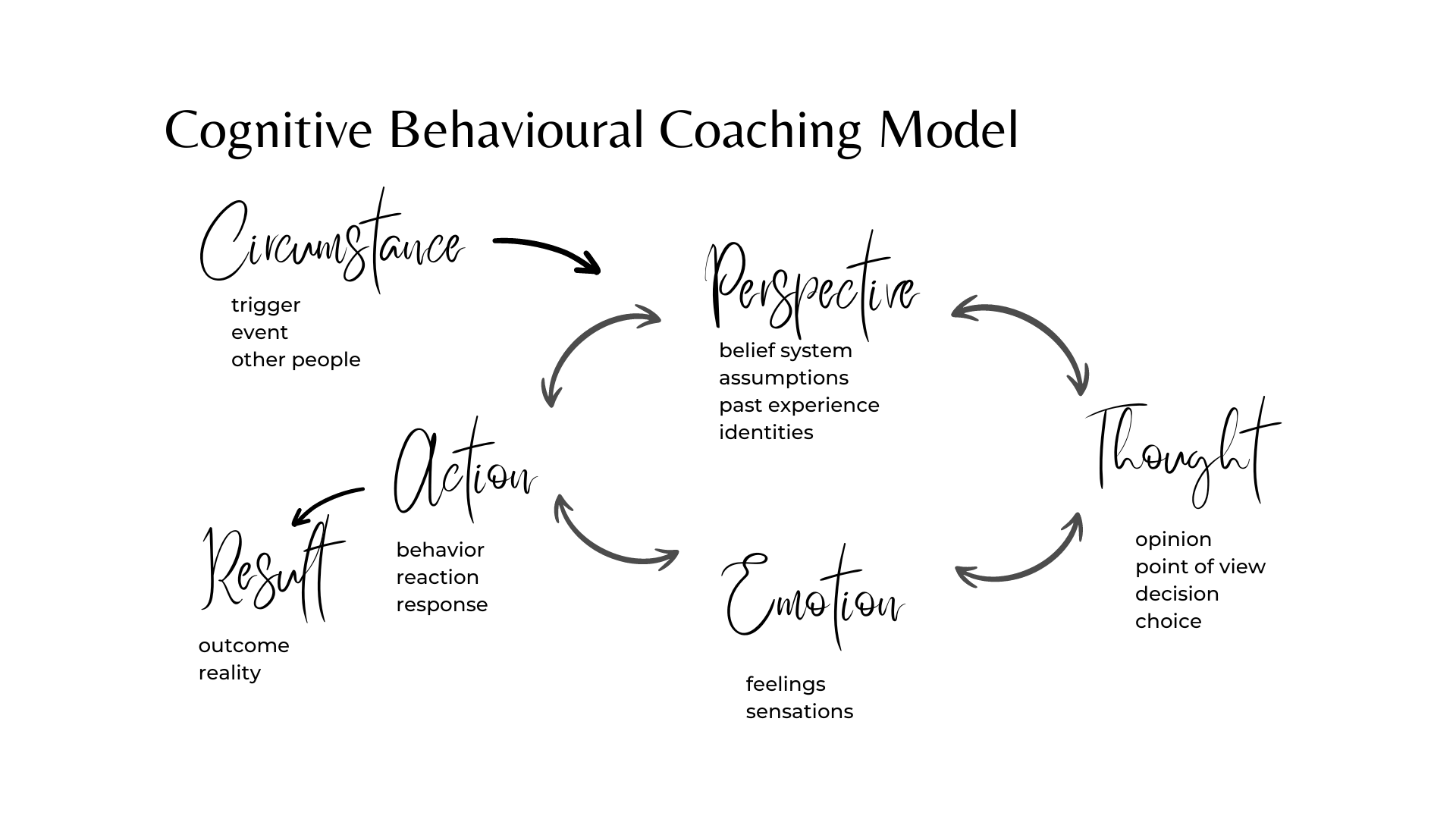

Cognitive Behavioral Coaching Model
Over time, the brain, or mind, adopts a “way of thinking” as a means to survive what we perceive as a difficult situation. These flaws in thinking are known as cognitive distortions or thought errors. This is what keeps women in the cycle of dieting and body shaming even though it has proven to be a very ineffective way of living life.
- Mental filtering
- Jumping to conclusions
- Personalization
- Black and white thinking
- Catastrophizing
- Overgeneralization
- Labelling
- Emotional reasoning
- Magnifying/ Minimizing
Over the years of working with women in a non-diet model of care approach, and my personal journey in recovering from 25 years dieting career, I have observed a pattern in cognitive distortion. I coined the term Diet Brain to better express this pattern.
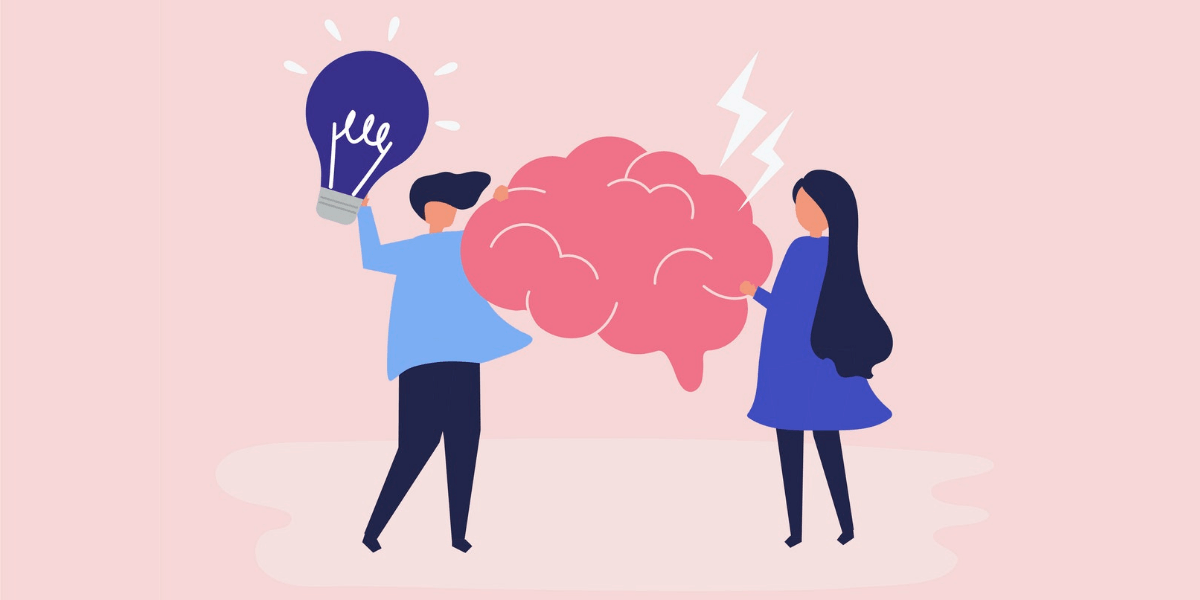

Diet Mindset & Diet Brain
Diet brain, the term I coined a few years back, is the collective of 4-main thought errors. In my clinical observation and personal experience overcoming each one, this pattern that is present in most women chronic dieters I have worked. What are these traits?
All or nothing / Black and White thinking
This can be best described as the on the diet / off the diet lifestyle. The good and bad food dichotomy as dictated by diet culture. With time, it spread these faulty thought patterns to every aspect of our life: exercise, work, career, relationship, how we raised children….
Perfectionism
Simply put: Everything must be perfect to off so we can be worthy of love, acceptance. At first with diet, food, and exercise but as failure cumulated, it becomes a way of life to prevent potential rejection due to “unperfected body”.
This cognitive distortion leads to a perfectionist fantasy. We make our current life so miserable by thinking that solving your problem (aka body size and appearance) will provide us with the happiness we are seeking that we actually never live (and enjoy) our current life.
Mental filtering: It’s my body’s fault
The body and its size take the blame for everything that’s wrong in your life. From health to a relationship, to opportunity, to emotional state… it’s all the body’s fault. Women then consistently compare themselves with others based on beauty and body size.
People-pleasing
This is when women move to external validation because internal validation is absent. As they believe that they are unacceptable, they will attempt to please and comfort everyone around them as a means of avoiding rejection and gaining acceptance.
These four most common cognitive distortions most present with women chronic dieters then strongly influence their eating patterns, ability to practice self-care, and create health-promoting habits.
The non-diet approach will first help the client and the patient with their mindset and emotions before engaging in nutrition education. In our diet mindset professional training, we teach the framework of self-coaching.
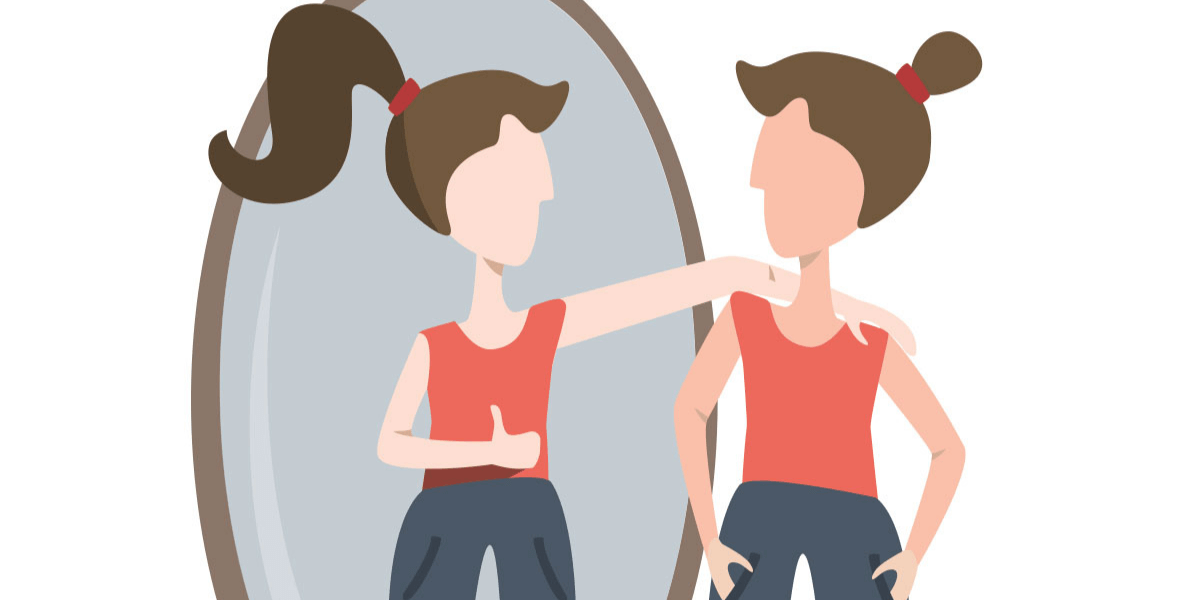

Self-Coaching for Intuitive Eating
Self-Coaching is a framework that supports first becoming aware of our thought, observing them without judgment and last to change our thinking. It’s also an effective approach supported by neuroplasticity. Neuroplasticity is the brain’s ability to reorganize itself by forming new neural connections throughout life.
We’ve developed a unique framework that supports the long-term goal of helping women recover from diet culture and become intuitive eater and body neutral. This is the best tool for diet mindset recovery for a professional approach. Self-coaching for intuitive eating is applied in 3 steps:
Step 1: Self-observation
The process of self-coaching cultivates the first skill which is about being an observer of our inner world – our thoughts and our emotions. This process helps raise the level of interception that clients will need as they begin to explore their innate eating cues with intuitive eating.
Step 2: Non-judgement
Self-coaching is about exploring your inner world with a “lense of curiosity” instead of judgment. Asking the question “I wonder why I think like this or do this” instead “I’m so stupid because I do this” is empowering and creates deep mental clarity. You can then decide how you want to think about X or what you want to do about Y.
Step 3: Conscious response
The last step of self-coaching is about choosing conscious responses or thoughts that work best for you and your specific situation, problem, or challenge. Self-coaching is ultimately about deciding consciously instead of reacting unconsciously.
Self-coaching as a thought in an intuitive eating mentorship program is about teaching our clients to connect to their innate wisdom and their power. It leads to emotional intelligence by taking charge of your mind and emotions.
That’s the feminist approach to food and health.
Get Started with Diet Mindset Unlearning Professional Training
We have created for you a number of free non-diet professional training resources to help you begin your research in the field of non-diet approach to health. You will find non-diet online training, webinars, podcasts, and articles.
You can access the non-diet coaching professional training here:
Non-Diet Professional Mentorship
Our Non-Diet Coaching Certification is a high-level business mentorship program for health professionals who want to take their business to a non-diet model of care. This program includes diet mindset professional training.
A 6-month journey of business and personal growth exclusively designed for female health entrepreneurs mastering their own journey beyond the food with intuitive eating and body neutrality, while also learning to market their intuitive eating business with a heart so they can have a massive impact on women’s health.
Women Food and Power
A short essay sharing how I claim my power back….my story to live a powerful life that I love through food and body image.
My life was pretty good: I had food on the table, a home, a car, a great career that brought in enough money, cool friends, a supportive family.
I thought of myself as an independent fierce woman.
But I also wondered, “… is that what life is really about?”
While by society standards I was doing all the right things I kept, wondering if every other woman was as anxious as I was about how I looked. Were they as overwhelmed as me at the thought of not losing or worse gaining weight? Is it normal to feel this frustrated with food and not being able to eat like everyone else?
Everyone around me reflected that it was all ok, but secretly, I knew something wasn’t right. So, I kept going making sure I was checking all the boxes:
My partner: Making sure he was happy, satisfied, that he felt loved.
The boss: I was delivering the results expected.
Social circle: Making sure I was there for them and was pleasant.
My parents: Striving to be #1, working hard and making money to ensure my safety.
Society: being a good girl and kept striving for the female beauty standards of thinness
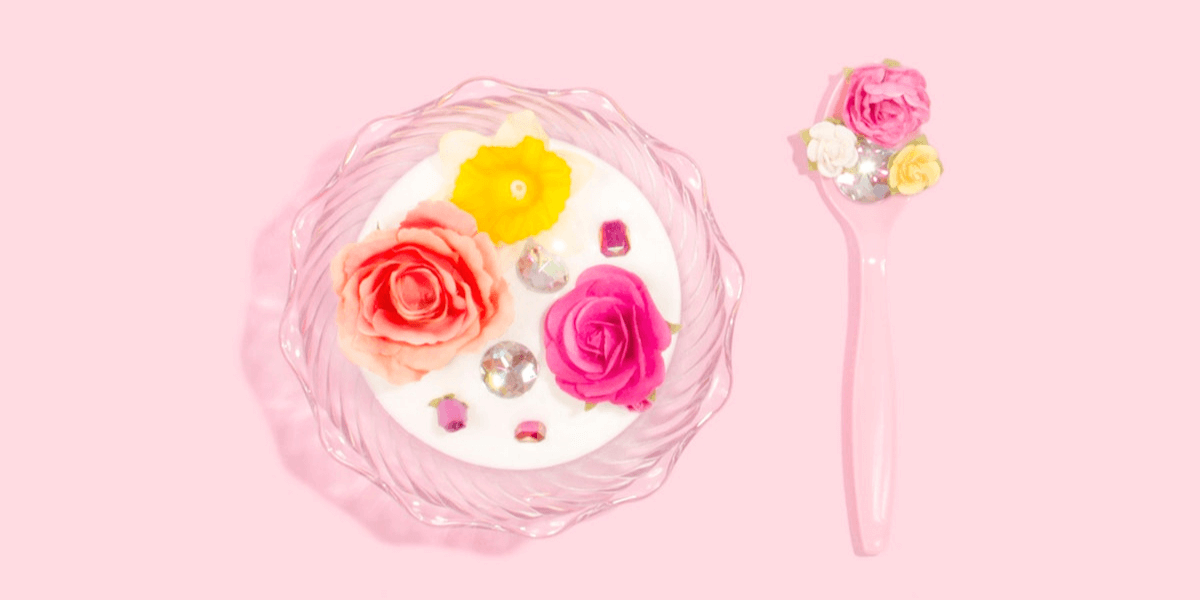

And then the forties came along
It wasn’t one thing one moment… one day. It was a series of little things that collectively lead me to realize I was living the illusion of a happy life based on others’ beliefs.
That’s why I was eating…
I was years in the making. In fact, I was a pretty smart child and wasn’t afraid of speaking my mind. I played with boys as much as I played with girls. Certainly, a tough little girl.
But at 13, the society led me to believe that I was too much. Too tall. Too big. That if I wanted to be a good girl from now on, I needed to be less. Smaller. Thinner and also quieter. To achieve this goal of being a good little girl, food was going to be the weapon of choice. Over the next few years, I learned to diet and that shrinking my body was the gateway for me to manage my “too muchness”.
By the end of my teenage years, I learned that my power was food because I was so into diet culture. I learned that for society to accept women, she must conform to its standards. Unfortunately, I wasn’t born with a body & spirit that naturally conform to the norm so I accepted that I would need to work hard at fitting in for the rest of my life.
That’s exactly what I did for nearly 27 years until my forties came along. I started to read self-improvement books and questioning the beauty ideal imposed on women.
Women Food and Power: My journey
Up to then, my power was food (and the attempted control of weight) all to fulfill the illusion that being smaller would deliver better. I thought if I couldn’t control my height at least I could control my weight.
It turns out that controlling my weight wasn’t an easy task. It worked and then it didn’t but I learned quickly to be a “good fat person” by at least trying to lose weight and making sure everyone knew I was trying hard. That’s when I started to eat in secret.
By the time I hit my mid-twenties, I had a strong coping mechanism in place to cope with my inability to conform to what my body should look like.
- People-pleasing: I sought external validation so I made sure I wasn’t rejected
- All or nothing: On and off the diet. It’s my fault it doesn’t work so try harder
- Perfectionism: To compensate my “not enoughness” and “too muchness”, I needed to strive to achieve everything perfectly
- Mental filtering: Life is about controlling my body, therefore, my food.
That’s what I call today Diet Brain. Diet brain was the way my subconscious mind evolved to cope with the world that I felt rejected me and my body.
But something happened in my late thirties. I had this resounding secret thought “I can’t do it anymore”. I felt exhausted and the excitement of the latest diet has vanished. Soon enough, my body followed suit and wouldn’t cooperate anymore. I was anxious, depressed, and sick.
I couldn’t imagine that the rest of my life was going to be just another “diet”. Is that what life was about? Really just managing my weight?
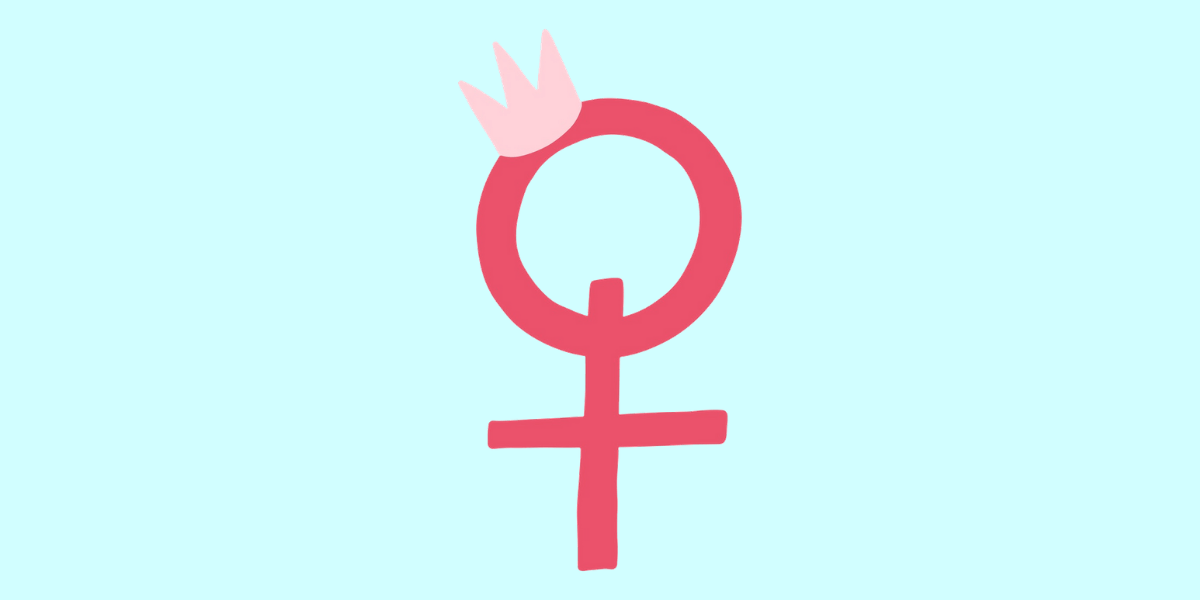

I was born worthy
The truth was that my life focus had been on chasing my self-worth. I was failing at the task but always trying and I was failing because self-worth was never going to come from being smaller.
I was born worthy but somewhere along the line of my life, someone or something led me to believe that I needed to earn my worth through my body size.
Although I had chased my self-worth for over 27 years through my body size and had yet to find it, I never questioned this belief. The indoctrination from diet culture early on in my life was still creating my reality today at 40. That’s the magic of the subconscious mind.
That is until I started to question my beliefs. Could I be enough without being in a smaller body? Is it possible to be loved and supported without being smaller? Could I be successful without being quieter?
I always had a choice
Yes: It was a possibility. I could be loved, supported, and accepted at any size.
I started to notice women in my life that were “enough” without being smaller. Women who were successful, happy, and confident in non-conforming bodies. Women whose power wasn’t wrapped around food. New people came into my life reinforcing the possibility. Books, blogs, videos… over months I had plenty of evidence.
Yet I was still stuck. I had made different choices. By then I knew it wasn’t my fault that I was the way I was but it was my fault if I stayed like that.
I needed to go from wanting to change to deciding to change. The problem was I was afraid. Scared of the perceived work it takes to change. I didn’t have time. I didn’t have the resources…
The pain of doing the work appeared to be greater than the pain of staying in the “not enough”. So, I chose to stay put. I kept lurking on what was possible.
I had so many stories in my head that keep me from not making the choice to change. Let’s face it, when it came to my ability to change my subconscious mind was telling me: “You are a failure” or “ You’ll never be able to do it” or “Why would this be any different than your attempt to manage your weight?”.
My subconscious mind was on a mission to keep me safe and secure in my comfort zone. Not believing in myself was my comfort zone. I wasn’t worthy enough to believe in myself.
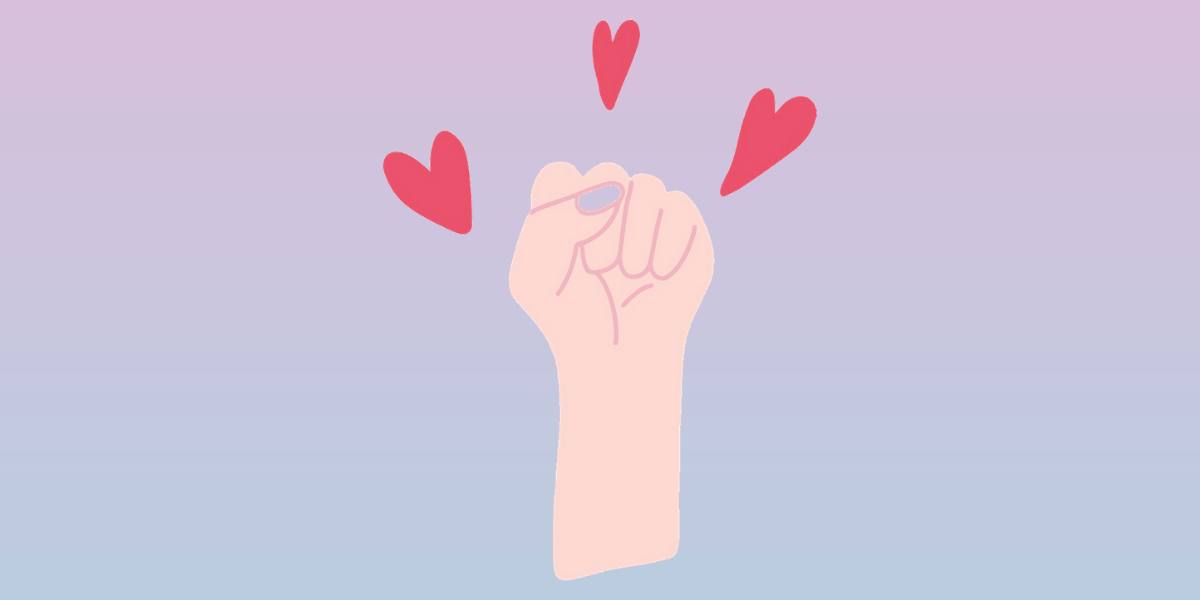

What if you couldn’t fail?
I believe in paying to be held at a higher standard that I can conceive for myself. So, I committed myself to have someone show me the way.
The greatest achievements I had in my life up to this point came from being taught by a great teacher or coach: sport, business, and adulting. I knew that if I was going to make it happen it was not going to be on my own…
“What if you couldn’t fail, Stephanie?” she asked.
In every other part of my life, failure was not an issue… would have learned from my mistake and tried again. Likely tried something different but nevertheless, failure wasn’t fear.
Why wasn’t it different from food and weight? I don’t have the answer just yet but it was. I think it’s because I had so many traumatic experiences in that sphere of my life that fear of failure paralyzed me.
“You are wildly capable, Stephanie. Look at yourself, you have dieted for 25 years, starving yourself, depriving yourself, overworking your physical body… you’ve done it all! You are so capable to do the work and make peace with food & your body so you can reconnect with your innate power!”
So, I got over myself and went for it.
Women Food and Power: The tools I found
I learned to think thoughts that actually made me feel good and learn tools to release thoughts that didn’t serve me. I learned to manage my emotions, process them productively instead of being overwhelmed by them. I now decide what stories play in my head.
At the same time, I learned to be present in my body not to what others think of my body. I’m present in the moment in my body. I’m no longer afraid of being with myself.
I learned to interact with my body as my best friend and be neutral. My physical body no longer is the filter through which I see my life. That’s body neutrality.
Lastly, I learned that I had the power within me to feed myself. My body and I are “good enough” to be our own nutrition expert. That was a turning point for me… through intuitive eating, I shifted the relationship of power with food.
Food was no longer about being less… food was about being ME.
That was the work and I did it.
Empowering yourself
How you engage with food is how you engage with your life. If you feel powerless around food you feel powerless with your life.
How you think about our body is how you think about yourself. When you hate your body, you hate yourself.
There’s a basic formula for life: Our thoughts create the way we feel, our feelings drive the action we choose to take, our actions forge our results, therefore, our thoughts become our reality.
If right now you think you aren’t good and/or worthy enough to have what other women have, that’s exactly the reality you’ll keep creating for yourself.
The most effective way to feel disempowered is to give your power of choice to something else, someone else than you. That’s what millions of us, women do when we decide to buy into the beauty ideal consequently, diet culture. The path of less resistance is to conform not to question.
Being empowered is recognizing that you do have the power to affect your life. It’s simply recognizing that you have the power to choose.
On the other side of fear is freedom.
“And the day came when the risk to remain tight in a bud was more painful than the risk it took to blossom.” -Anais Nin
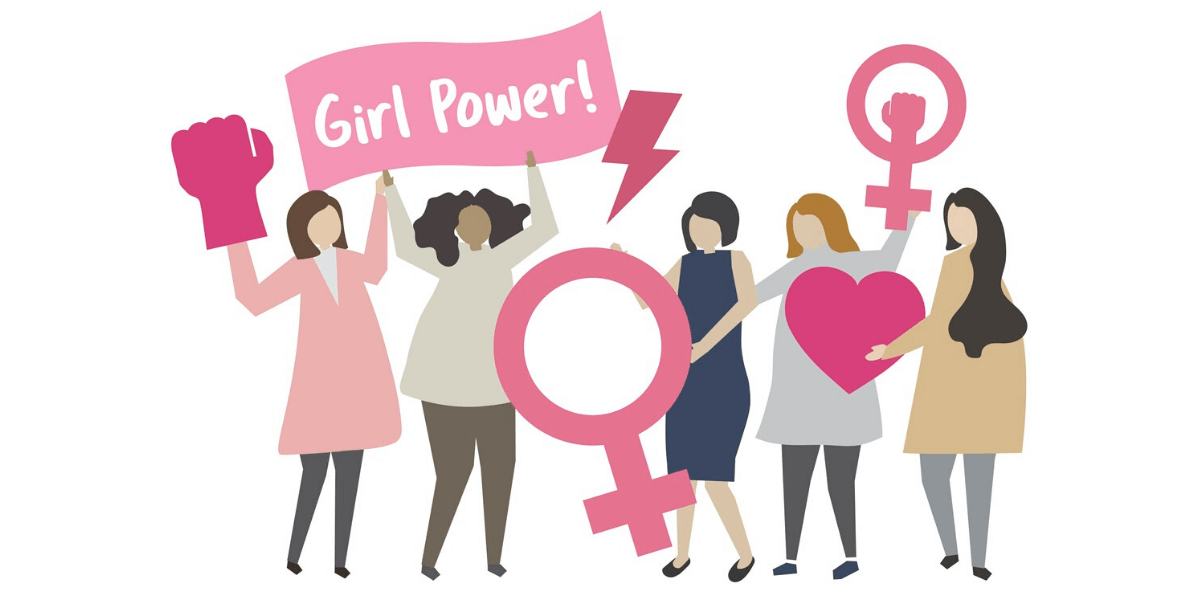

Let’s do it together
You can access all of our services on our work with us page. We have a number of programs and service levels enabling us to serve most women:
Free Resources and Masterclasses: Get started and get to know us better!
Private coaching with Stephanie and her team Stephanie and her team of Certified Non-Diet Coaches are waiting to support you in a one-to-one setting with an individualized plan.
Undiet Your Life group coaching program is for women to learn how to eat intuitively, become body neutral, and learn self-coaching at their own pace while being supported in a group setting by Stephanie and her team of Certified Non-Diet Coaches.
Non-Diet Coaching Certification for professionals ready to integrate the Going Beyond The Food Method™️ in their practice and for women wanting to become Certified Coach and build a business coaching other women beyond the food.
Good Money Business Mastermind A business mentorship and a collective of ambitious, driven and empowered anti-diet culture providers and coaches on a mission to dismantle diet culture and make GOOD money doing it!
Self-Coaching for Intuitive Eating
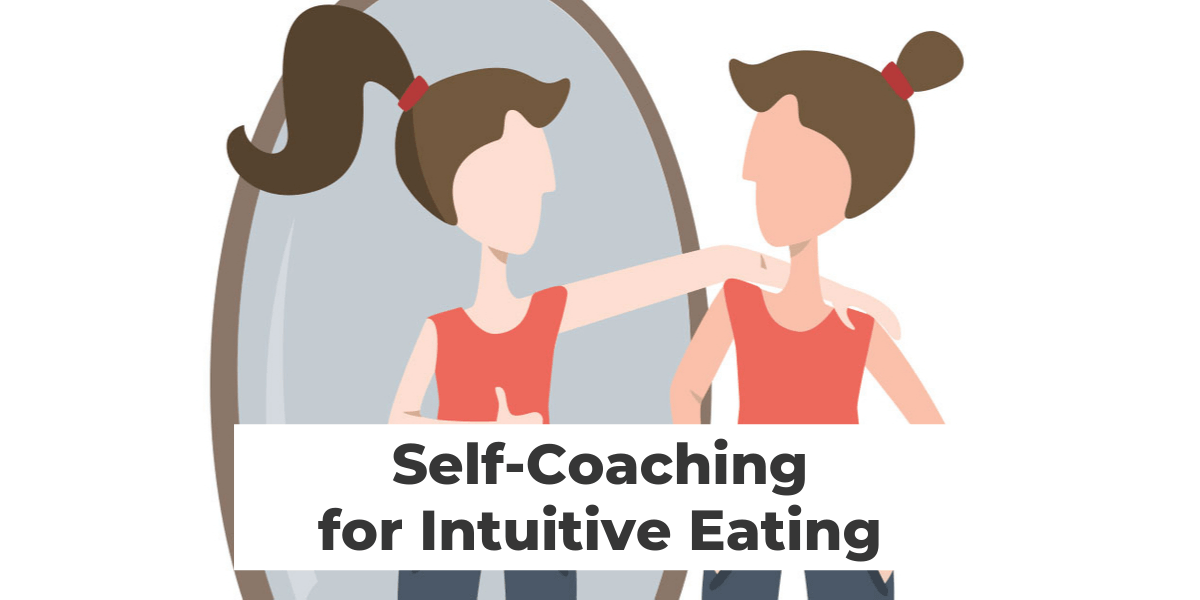

Have you ever wondered about self-coaching for intuitive eating and asked, “Can I be successful with intuitive eating on my own?”
After all, intuitive eating is meant to empower you to be the expert of your own body and make you the boss of YOU.
However, just as there are diet coaches, there are also intuitive eating coaches. But do you need them? And what’s self-coaching anyway? If you are your own coach, does that mean you don’t need a coach at all?
These are the questions that I aim to answer in this article. I also hope to help you understand what coaching is, especially in relation to self-coaching. Last but not least, I want to show you what the self-coaching model looks like and how it can help you change your thoughts and your behavior.
But first, let me discuss what intuitive eating is, just to make sure you understand the concept before we move on to self-coaching.
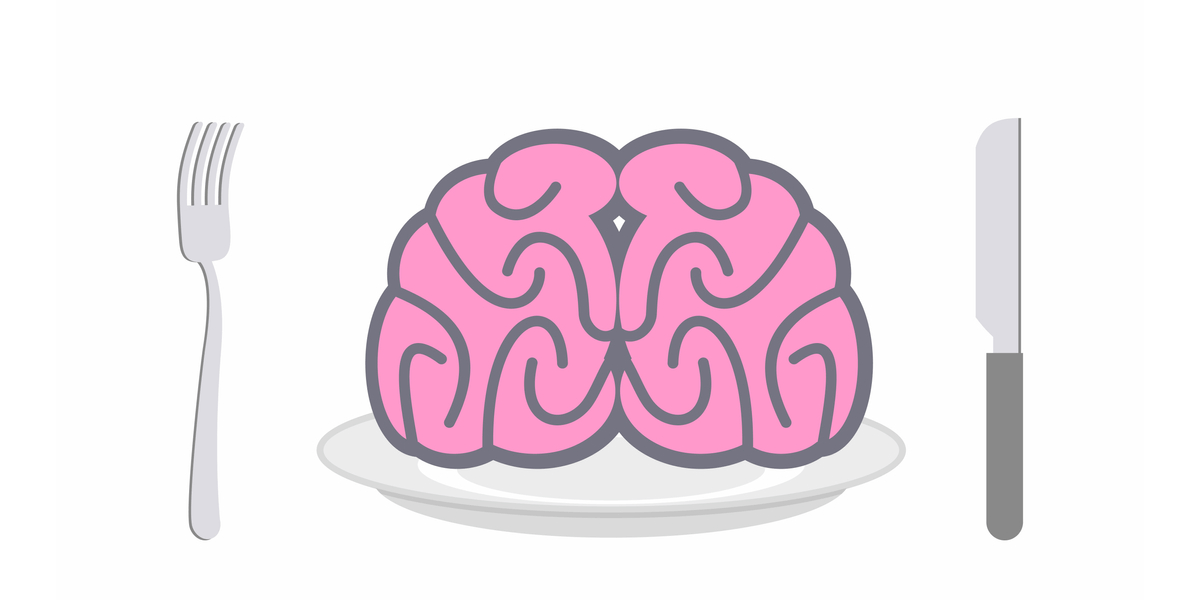

What is Intuitive Eating?
This is the intuitive eating definition I usually give whenever I’m asked about the concept: “A self-care framework that uses your body’s internal cues of hunger, fullness, and satisfaction to guide your eating behavior.”
Eating intuitively teaches you to trust your own ability to meet your own needs. It’s an empowering alternative to dieting. It requires you to be attuned to your body’s cues.
You can learn more about eating intuitively by listening to my intuitive eating podcast episodes.
Now, let’s explore self-coaching.
What is Self-Coaching?
Coaching is identified as the process of supporting a person towards a goal. It’s a form of development that leads people from where they are to where they want to be.
Typically, in a coaching relationship, there’s a coach, who does the coaching, and a coachee, who is the learner or the client.
Self-coaching is when you become your own coach. You are both the coach and the coachee. The idea may sound a little strange to you, but yes, you can coach yourself. You have an innate wisdom that knows what’s best for you and enables you to become the expert of your own life.
Coaching Versus Training: What’s the Difference?
Some people use the terms “coaching” and “training” interchangeably, but actually, they’re two different things. Training is focused on learning and acquiring knowledge. It’s usually formal.
On the other hand, coaching is focused on developing the skill set to apply the knowledge learned. It’s often informal, discussion-based, and experiential.
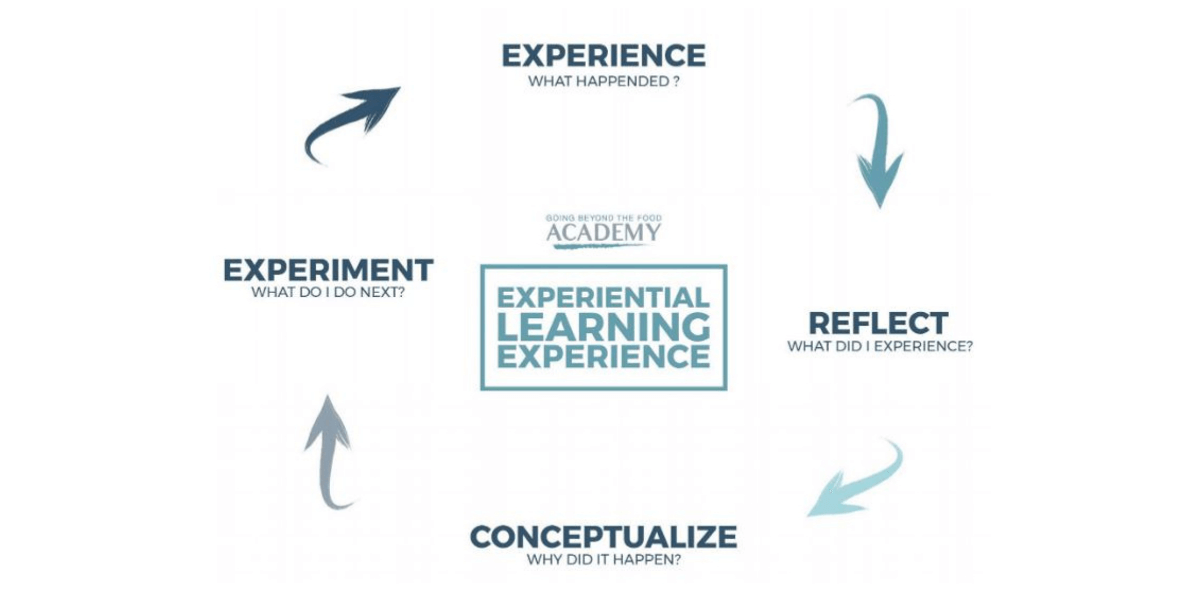

The History of Self-Coaching
The first use of the term “coach” in connection with an instructor or trainer was in the 1830’s at the Oxford University. The term is slang for a tutor who “carried” a student through an exam. In the 1860’s, the term was used in sports to refer to an athletic trainer or instructor.
With the advent of the human potential movement in the 1960’s, the term came to refer to mentors, especially in executive development in the corporate world. Today, there are coaches in different areas of life–life coach, coach for binge eating, fertility coach, etc.
Self-coaching came to the world’s awareness about 20 years ago. Dr. Joseph Luciani is the leader in the field of self-coaching. He wrote four books on the subject, including The Power of Self-Coaching. This book is a must-read for those who want to understand the science behind coaching and self-coaching.
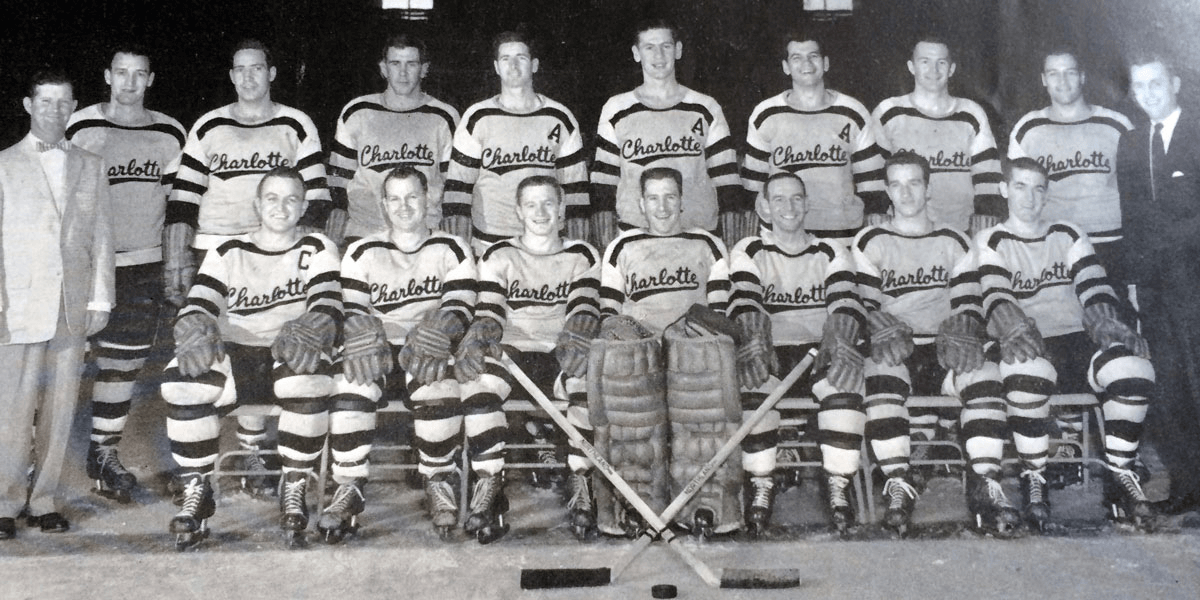

Coaching Versus Self-Coaching
In a coaching relationship, both the coach and the coachee establish goals centered around what the coachee wants to achieve. The coachee commits to taking action towards improvement. On the other hand, the coach brings guidance, support, tools, resources, framework, and a step-by-step action plan to help the coachee achieve the goals they set together.
On the other hand, self-coaching is tapping into your innate wisdom to make the best decisions certain areas of your life. It’s the same inner wisdom that guides you when you practice intuitive eating.
Intuitive eating is the process of learning to self-coach yourself around food.
So which one is better for you—coaching or self-coaching?


Having a coach is always better. A coach helps you build confidence and maintain momentum. You’ll know where to focus and you’ll never feel lost and overwhelmed because there’s someone guiding you.
Most importantly, a coach will help you see your blind spots, the patterns you aren’t aware of yet, so you’ll know why things haven’t worked out in your own.
But what do scientific researchers say about self-coaching?
Research on Self-Coaching
If you’re torn between self-coaching and coaching, you may want to know what scientific researchers say about the different types of coaching.
Researchers from different universities in Austria and Italy conducted a study on individual, group, and self-coaching. They found individual coaching to be the most effective type of coaching.
On the other hand, research on self-coaching reveals that it is not as effective as the other two types of coaching.
However, this doesn’t mean that self-coaching is useless or that it doesn’t work.
The best thing you can do is start with a coach who will guide your first steps towards your goal and teach you to be independent. A good coach will equip you with everything you need to learn so you can later transition to self-coaching.
How to Do Self-Coaching for Intuitive Eating
As I just said earlier, you can either hire a coach or you can do self-coaching. If you choose to strike out on your own with intuitive eating, here are the steps you need to follow. This is self-coaching 101 for intuitive eating. Follow these and you’ll get a good head start:
Step 1: Find out whether intuitive eating is right for you.
Step 2: Determine whether self-coaching works for you.
Step 3: Understand how your brain functions.
Step 4: Be aware of your thoughts.
Step 5: Pick one thought and investigate it.
Step 6: Replace the thought that is not serving you with an empowering one.
Step 7: Coach yourself by reinforcing the new thought.
These steps are discussed in greater detail in the following paragraphs. If you want to focus on a particular step, you can simply click the corresponding link above.
Step 1: Find out whether intuitive eating is right for you.
To help you with that, I have created a starter kit of self-assessment for eating, body image and mindset. Download the free non-diet assessment kit and complete the eating assessment. These are actually the same assessment I use with my private clients!
So go ahead and take the test.
Step 2: Determine whether self-coaching works for you.
In the free starter kit of Non-Diet Assessments there is a second evaluation for your mindset. Take it to determine your current mindset state and if self-coaching can be of support to you.
Step 3: Understand how your brain functions.
The self-coaching model is based on the CBT framework. CBT (cognitive behavioral therapy) is a type of psychotherapy that aims to change negative patterns of thinking and behavior. This framework gives us a window into how the brain works.
Here’s a graphic that shows the self-coaching model:
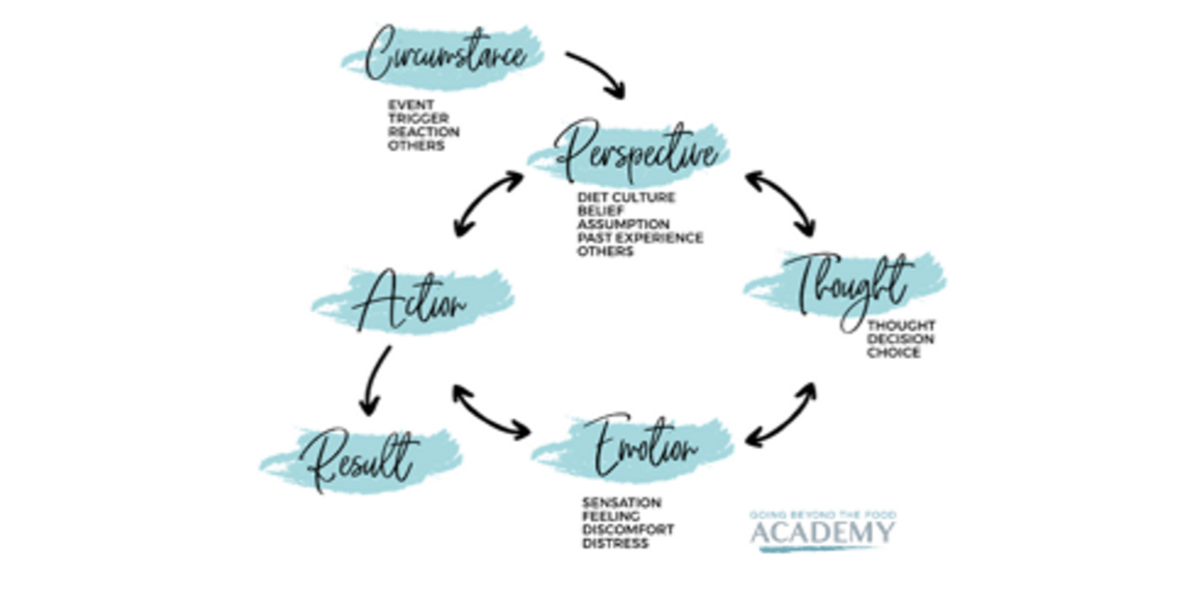

At the very top, you’ll see circumstance. This is an event that acts as a trigger, something that happens in your life that causes you to have thoughts and emotions that influence your behavior.
The image that you see goes through your brain and into a filter called perspective. Your perspective towards body image is shaped by your beliefs, assumptions, and past experiences.
After your brain goes through this filter, it creates a thought. Then, these thoughts create emotions. Your emotions influence your actions. Finally, your actions create a result.
When you understand how the brain works, you can use this to your advantage and influence the whole process to get the results you want. This is why understanding how your brain works is crucial in self-coaching.
Step 4: Be aware of your thoughts.
Kara Loewentheil, my mentor and the author of Unfuck Your Brain, once said, “Awareness precedes change.” So if you want to change your thoughts, you must first be aware of them.
Here’s an exercise that will help you become aware of the thoughts that influence your actions:
Grab a pen and a piece of paper. Write down your thoughts that you’re currently having around eating and/or body image.
Now, this is important: Write these thoughts down without judging them. Be in the “observer mode.” Just dump these thoughts onto a piece of paper as they come.
Step 5: Pick one thought and investigate it.
After writing down your thoughts, look for the one that comes up frequently (perhaps a recurring theme) or the one that’s most painful.
Take that thought and put it through the self-coaching model. What were the circumstances that trigger this thought? What emotions come up when this thought enters your mind? How does this thought influence your actions? What results do these actions create?
Investigating your thoughts will help you fully see the impact of your thoughts in your life. Some people skip this part, which is why they fail at self-coaching. They jump from being aware of a negative thought to changing the thought outright.
This step is essential. DO NOT skip it.
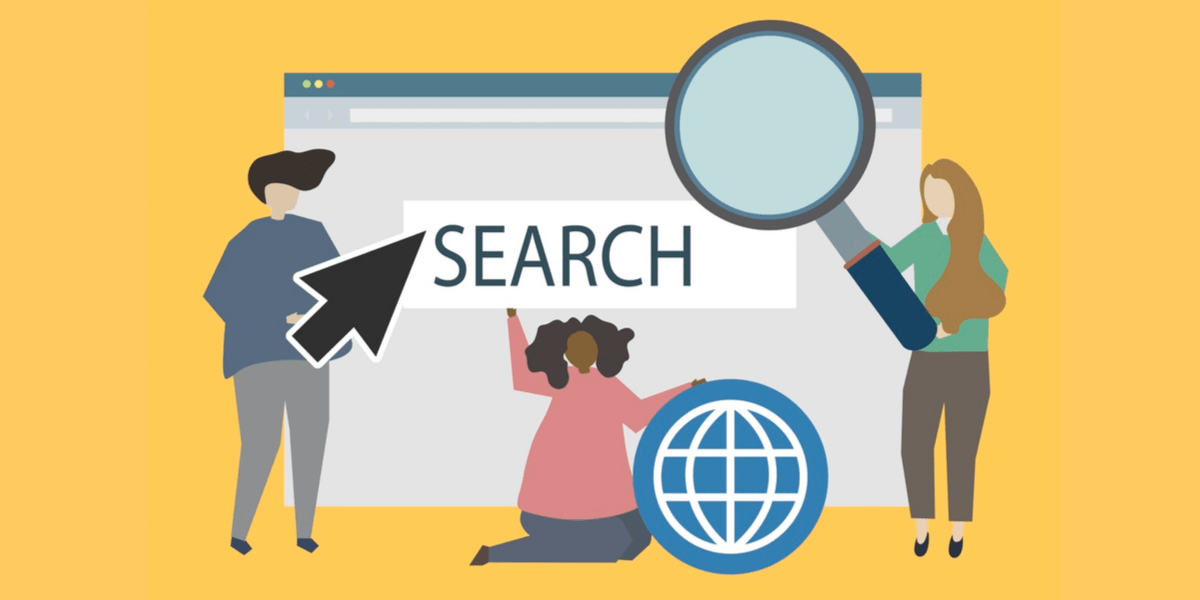

Step 6: Replace the thought that is not serving you with an empowering one.
Now that you’ve investigated the thought that has been responsible for the results that you don’t want, it’s time to replace that thought with one that empowers you.
In the previous step, you saw how your old thought led you to the results that you didn’t like by putting it through the self-coaching model. This time, you will create a new, empowering thought by applying the same model you used to investigate the old thought.
In a nutshell, this is how you do it: Create an empowering thought that generates the emotion that drives the actions needed to produce the results you want.
Step 7: Coach yourself by reinforcing the new thought.
You now know how you need to think and what you want to think. It’s your job to go and repeat that thought many times every single day. You can get creative by making a poster that reminds you of that new thought. Or you can scribble the thought on a Post-It and stick it where you’re likely to see it often.
Now, reinforcing a new thought in order to change results isn’t as easy as it sounds. It will require patience and practice. You also need to keep the motivation and momentum going, especially when you must take action. Setbacks will be inevitable, but look at them as learning opportunities rather than failures.
In the end, the benefits you reap will be well worth your patience and effort. So, keep at it!
Need support to learn self-coaching?
If you’re looking for an program to help you learn self-coaching we offer two different option: Beyond Mindset is short term program specifically focussed on teaching self-coaching.
Undiet Your Life Program is our signature intuitive eating coaching program that teaches you self-coaching techniques, along with intuitive eating and body neutrality. It also aims to equip you for self-coaching for your entire life.
Religion and Self-Empowerment: A Letter to Christian Women
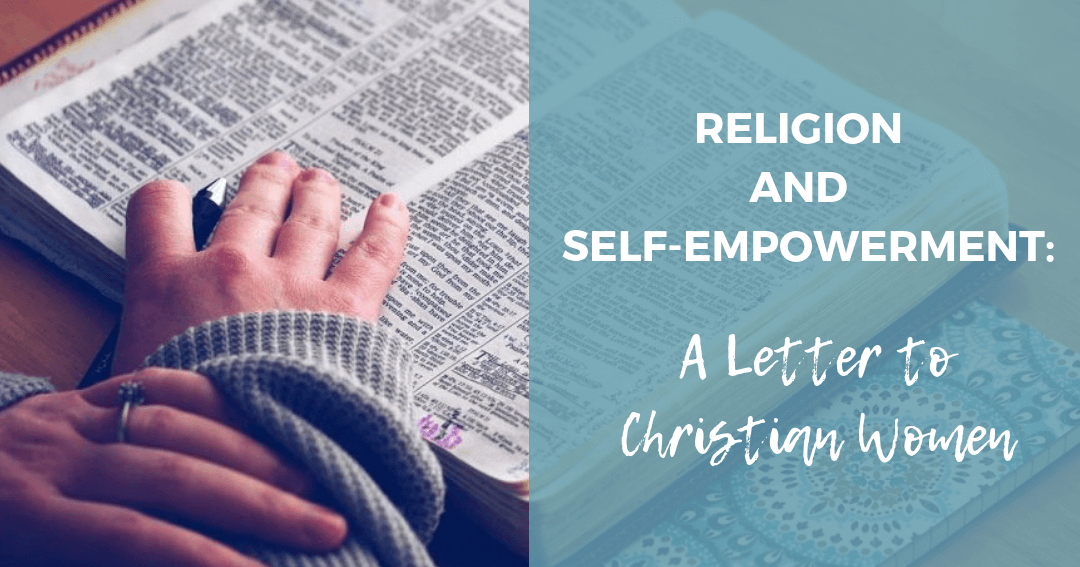

Note: this article is a guest post written by Susan Sledge after working with Stephanie as a 1-1 client in 2018.
If you are a practicing Christian, you know that one of the greatest teachings of God is selflessness. As servants of our Creator, we should be enhancing our spirituality by selfless acts like helping our neighbors, forgiving people, loving our enemies and serving God, and less emphasis on our physical body and material things in this life.
Some people think that what I impart through my works about self-appreciation and self-empowerment does not sit well with the teachings of Christianity. One might think that by following the lessons I teach about loving yourself and knowing yourself better, they are doing the exact opposite of what God wants us to do.
I’m not an expert in religion, but I think there are important connections between our methodology Going Beyond The Food Method inside all of our programs and the teachings of Christianity. That’s why I want to share this letter from Susan Sledge, one of the students of Going Beyond the Food Academy to all Christian women who are doing the same work inside our program as a 1-1 client.
Written to Stephanie Dodier on August 1, 2018. It is a letter of clarification from me, as a student in the Going Beyond the Food Academy, to another Christian in the program who may be questioning the Academy’s teachings in light of Christian beliefs.
Dear Sister,
We have a mutual friend in Stephanie Dodier and I’m assuming a similar food freedom journey. I have spent the last couple of years reconciling what the Bible and Spirit of God has to say about our body, soul, and spirit. I’m passing along what I have come to understand in hopes that it will encourage you and enhance your walk.
Four Bodies, One Image of God
There is an excellent study by Andrew Womack on Body, Soul, and Spirit that you can get through his website or listen to by podcast. Materials are free and I think it is an excellent place to start. If you want the summary version then I suggest watching this Youtube video. Although the study goes into great depth proving three forms of our being, I have summarized it below:
1) Body – Physical body made of up bones, muscle, tissue, brain matter
2) Soul – Includes your mind, will, and emotions; Some think of it as your personality, how you think, how you process the world
3) Spirit (with a little s)– Innermost, eternal part of you. The part that God breathed into Adam at creation. After you became a believer, your spirit (little s) was perfected and you became a “new creation”.
4) Spirit (with a big S) – God’s Spirit that was promised to you as a believer. It was fused with your (little s) spirit. They are inseparable and form the new creation. His guidance is within you and part of you. He resides in you and your spirit.
In eastern medicine, Stephanie will teach you that there are 4 bodies. It is similar to Biblical teaching, but soul is a term used in the Bible to encompass both the mind/logic and emotions/will. In Christian thinking they are not delineated but so entwined that they utilize one term. Instinctively though, we know there is a difference between our “heart” and our “head” which is more in line with eastern teaching.
Every man is made in His image which includes Jesus, Father, and Holy Spirit. We are like beautiful diamonds that are multifaceted, multidimensional as He is. We all contain aspects of Him and in glorious moments, we demonstrate to the world who the creator is. Glorious moments can include spectacular moments or simply everyday life like, smiling at a stranger, the squeezing of someone’s hand to communicate love, passing on wisdom to another, being a helpmate, or interceding for someone’s need. We all, regardless of our religious beliefs, exhibit characteristics of God because he made us in His image.
In the Godhead, you will see Jesus who represents God’s bodily form. He had a form when walking around in the fiery furnace (Daniel 3). Jesus/God wrestled with Jacob (Gen 32) and of course was born into a human body which was later crucified. His body was resurrected, and he functions in it today. Father God is representative of divine thinking, wisdom, and emotions. It is the being that loves, protects, and provides for us. He is the one who administers justice. Holy Spirit is a gift. Holy Spirit is the creative, helpful teacher full of wisdom and guidance. Our three bodies (body, soul, spirit) have a purpose and together, we are able to move through life in communion with this world (Jesus). We are able to process past, present, and future to make decisions and to act (Father). We are able to learn from our innermost being to heal ourselves and others and live an abundant life (Holy Spirit).
Love Our Neighbors by Loving Ourselves
In my religious background, loving myself was a selfish act. I’m not sure if you can identify with that or not, but the higher calling was to love others and not to focus on self. I have come to believe that message is skewed.
When Jesus speaks of the Father and Spirit, it is with great love and adoration. When the Father speaks of Jesus and the Spirit, it is also with love and adoration. The Spirit also testifies of the same with regards to Father and Jesus. They love each other AND they are one being. So, it is fair to say that God (Father, Jesus, Spirit) loves Himself. Out of that love, He created man.
Jesus said the greatest commandment was to “love God with all your heart, and with all your soul, and with all your mind (Matt 22:37)”. The second commandment is similar, “you shall love your neighbor as yourself” (Matt 22:39). Jesus was answering a religious lawyer who was trying to entangle him in legalistic, right/wrong thinking. Jesus knew the hardest part about keeping a law was that which the soul processes (heart, soul, mind) and if we focus on loving God, our creator/father/friend/savior then everything else falls into place in due time.
When Jesus told us to love others as ourselves, there as a HUGE assumption on His part that we love ourselves. That sentence can be rewritten to say “as you have come to love yourself, love others in the same way”. What does that mean?
It is what Stephanie teaches in the form of self-compassion, body neutrality, meditation to calm the mind, mindful movement to honor the body, nutrition to feed our body, and spiritual practice to nurture the spirit and commune with God.
Self-Sabotaging Behaviors Shut Spirit Flow
Womack’ study speaks of the body, soul, and spirit being a pipeline. He uses the analogy of a valve between the spirit and soul that we control the flow. We can either shut it off completely and not interact with the spirit’s wisdom or we can let it flow like a raging river. When spirit knowledge comes into contact with the soul there is a renewing of the mind (mind, will, and emotions) that takes place and when it is complete, it will be demonstrated in the body. So, the flow goes from spirit to soul then to body.
Sometimes, when we don’t see God’s promises manifest in our bodies, it is because we have turned down the flow or our minds haven’t yet fully embraced it as truth. Stephanie’s work is about helping us evaluate our valve control or belief system in the renewing of the mind. When she talks about the subconscious or self-sabotaging behaviors, I liken it to the pipeline analogy. Sometimes we know we are limiting the flow and other times, our soul is acting on our behalf because of what it believes to be best.
There are inner healing ministries dedicated to uncovering the lies we have believed and asking God to heal them. Beyond the Food program is about finding the lies we are believing about ourselves and being open to healing from different sources (self, food, higher power, breath, mindful movement). For me, I am able to easily transform the imagery from the different tools Stephanie presents to God’s provision and all the tools He has provided me on this freedom journey.
When God created Adam, He commanded Adam and Eve to take dominion and rule over all they had been given. Believers are given authority in spiritual matters. We are entrusted with the care of ourselves and His people. I think I understood it well when ministering to others, but I don’t know that I took dominion in my own life when it came to self-care. I placed others need above mine and I had come to believe that I was incapable of permanent change and because of past performance, I might not be worthy of it.
Of course, they are lies, but when we believe a lie, it becomes our truth, in a sense, and it’s not until the renewing of the mind that we have an “ah-ha moment” and the lie is replaced by truth and the valve opens up the flow a little bit more. It is difficult to stop moving water. As we get truth flowing through us, it is hard to stop the healing that transpires. When we know better, we do better whether we really intend to or not.
This is why Jesus is called the truth and because of it, He is the way, the truth, and the life. When He (Jesus, Father, Spirit = God) flows in us things truly change. When we see a dry, barren area (because of the exercises, reflections, journaling, meditation, etc), we can signal to Jesus that we have a dry spot. He will reroute the truth flow over that spot. Old will pass away and the new is now in the current. This is dominion.
Because our spirit and God’s Spirit are fused together and perfected, this search and rescue mission is symbiotic. It may feel like He is pointing out the dry spots while other times we are doing the excavation. Either way, spirit/Spirit are working in tandem to provide healing and life abundant.
Reaching God from Within Ourselves
Let’s talk about meditation and yoga. In Christian circles, we are taught to not go inward because we are taking our focus off God and onto us. I subscribed to this thought for many years because of the amount of scriptures speaking to focus and reliance on Him. I have had a few “a-ha” moments over the last couple of years that have changed my thinking.
First, if God, through His Spirit resides in us, then wouldn’t we go inward to seek Him in addition to other ways to access Him? Second, have you ever done a “soaking” session or silent retreat? The whole point of these sessions are to quiet the world, quiet the mind so we can hear from Him. Having this internal navigator was the miracle of the cross.
Old Testament believers couldn’t fathom the concept of God residing within us….actually taking up residence. Meditation, which can also be a part of yoga, is a prayerful act of calming the body and soul so that the spirit can speak. This includes your little S spirit and His big S Spirit. If the word meditation wigs you out, then try substituting the word prayer. If I recommended 10 minutes of prayer every night, you wouldn’t argue with it, would you?
In worship, there is a release where your mind is not racing around but focused on God. You release your cares for one moment (soul), let your body experience the movement (body), and your spirit has a moment to connect with the body/soul and God. Sometimes in worship, we get moments of clarity because the mind is focused and released for all other obligations, much like the act of meditation. If you speak in tongues, you have experienced how your spirit by-passes your mind to commune with God. It is a release, encouragement, and “reset” much like meditation.
He made us Capable of Self-Healing
Healing breath is another topic for discussion. When Stephanie says to send your breath to an area to break up anxiety, I say try it and see what happens. It is nothing short of a miracle. Scripture says that every good thing comes from God. Holy Spirit is described as a wind and fire. Breathing stirs up something in us. It purifies within us. When we circulate breath, we are circulating a healing power that God breathed into all men.
So God’s gifts are for everyone and not just us Christians? Whoa, now! I’m probably stepping on some toes. When He created man, he created them and said it was “good”. His relationship to them was perfect and the world was created for them.
After sin entered the world, there has been a continual process on behalf of God to restore us back to original design and relationship. Through Jesus, he took care of the relationship piece. Your spirit is in perfect unity with His but your body and soul are still in process of being restored back to perfection.
Think of it this way…..if you were stupid before believing in Jesus, you were stupid after, but over time, you learned more and got a little less stupid. If God is the creator of all good things, then He created them for all people not just Christians. Some people are able to recognize God’s gifts better than others and believers should be quicker at it because of the relationship they have with the Godhead and practice over time.
Wisdom is a God-given Gift
Wisdom is something that God gave the world and to every man. Wisdom is personified in the Bible as “she”. She cries out in the marketplace meaning she speaks in the busiest of places. This could be the nightly news, your business, your children’s school, a friend, and cultural trends. Wisdom has always been here.
I imagine wisdom was shouting at Eve when she started talking with Lucifer in the garden but with free will, she chose to ignore it. Wisdom wasn’t just in the middle east, it was everywhere. Could a man in China hear wisdom and apply it to his life in 1000 B.C.? If you have ever visited a museum of ancient cultures, you would have to confirm that wisdom must have been present and the people grabbed it.
What about eastern medicine and integrative medicine? Could it be that they have had their ears attuned to wisdom and picked up what she has been putting out? I believe this is why you see nuggets of truth in every world religion. They are picking up wisdom from God.
Jesus is the issue, however. Who we believe Jesus is….Son of God/God Himself removing all barriers between Himself and man….is the core issue of our belief and the monumental divide with other belief systems. Wisdom, however, is God’s gift to all of mankind.
I have gone on and one, but felt the need to share this with Stephanie in case she wants to pass it along to another curious, Christian mind. Feel free to reach out to me if you want to discuss this further.
Hugs,
Susan Sledge
[email protected]
817-219-7801
8 Powerful Questions For Your Life Transformation
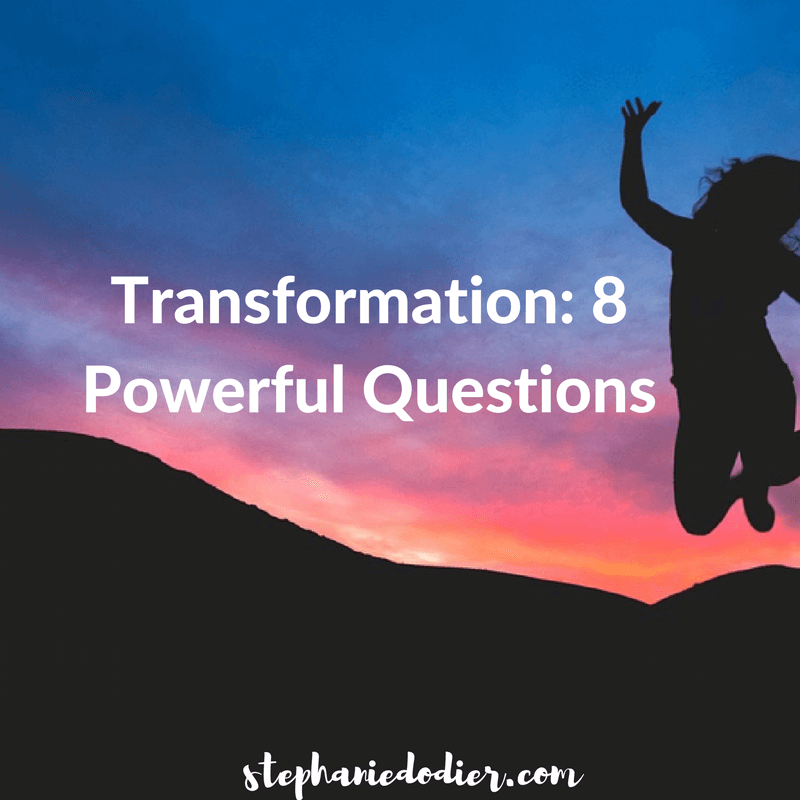

The right question can do more to motivate a student into playing a bigger game than reading a whole bookshelf of inspirational books or attending several ‘how to’ seminars.
Why is that?
Transformation questions, when phrased and timed well, entice us to go inside and look around the many rooms of our body-mind. We emerge knowing ourselves better than we did before and willing to take on new challenges.
https://youtu.be/39E8OqyWPg8
Transformation Process
These questions are the kick starter to any profound and permanent transformation process and that’s exactly what I teach. I simply chose to use food as a tool to teach transformation. That you try to transform your diet or your love life or your health the process is all the same.
You must first get clear with yourself on what you want.
Then learn new skills and or make a decision that will allow you to reach your goals.
8 Transformation Questions
You will need a journal for this exercise, a place where you can gather your thoughts, observation, and feelings.
I would suggest reading all questions at first without answering any. Let the questions sit with your spirit for a few days.
In the following days take 1 -2 question at a time maximum per day and write your answer in your journal. Set the environment that will allow you to get the life-changing answer you are looking for: be alone, no one to disturb you, be in a relaxed state with no pressure about time, in a positive mindset.
When you write your answer leave plenty of space for each question to be answered as you may want to add to it in the process. Read your answers and add more thoughts as you go.
- Where do I want to be in five years?
- How do I want to feel on the inside in 5 years time? Where will I be emotionally, physically and spiritually?
- What bad habits do I need to stop? What do I need to take responsibility for?
- What mistake have I made? What would I do differently?
- What story have I told myself? What conditioning did I receive?
- If no one judged me, who will I be?
- Who would you be if you weren’t concerned with pleasing and caring for others?
- Why do I like food more than my own health (self)?
So, next time you feel stumped, stuck, or unsure where to go, ask yourself these powerful questions that will serve as a kick starter to your transformation.
If you ready to start your journey in transforming your health with nutrition you should check out my free Crave Cure Guide.
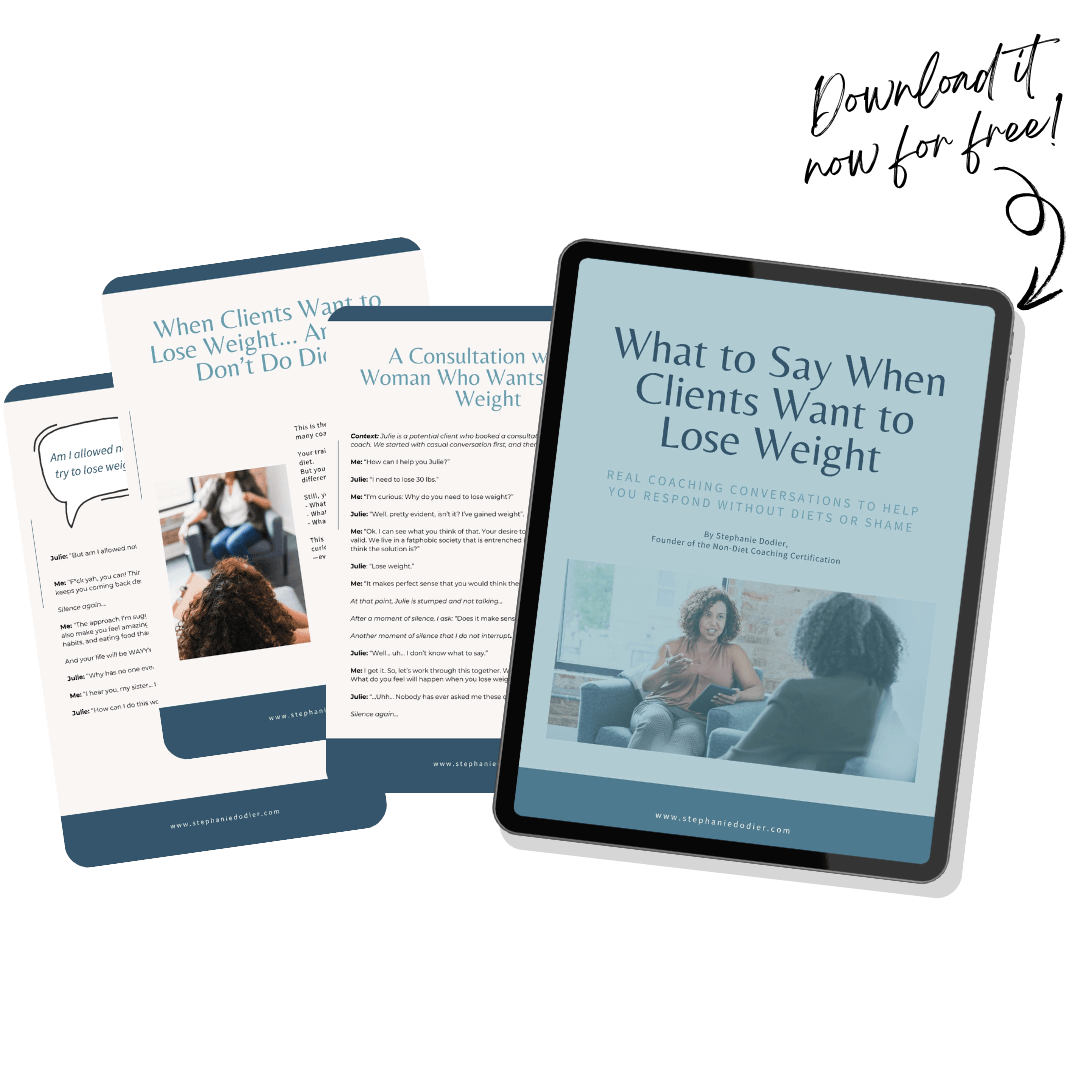

FREE GUIDE
What to say when a client want to lose weight
GET THE EXACT WORDS I USE IN REAL COACHING SESSIONS—WHEN WEIGHT LOSS COMES UP AND I’M HOLDING A WEIGHT-NEUTRAL STANCE


FREE GUIDE
What to say when a client want to lose weight
Get then exact word I use in real coaching session when weight loss comes up and I'm holding a weight-neutral stance
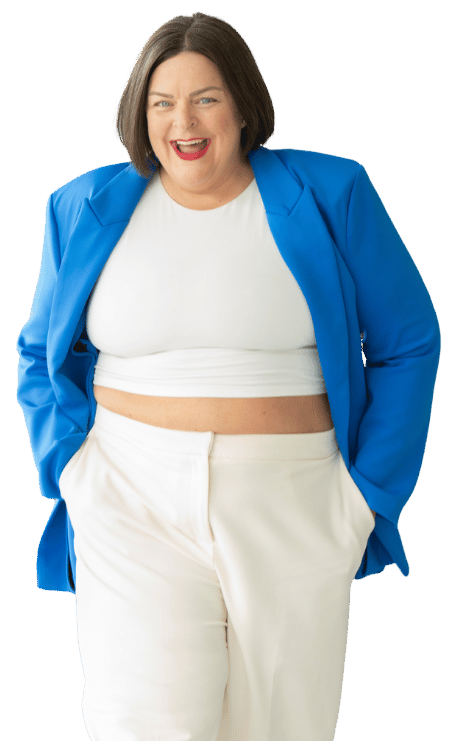

Welcome!
I’m Stephanie Dodier
I am a non-diet nutritionist, educator, and feminist business leader challenging everything we’ve been taught about food, health, and coaching.
I help health professionals confidently coach food and body without co-opting diet culture.
Join me in leading the health coaching revolution!
Ready? Let's do this!

